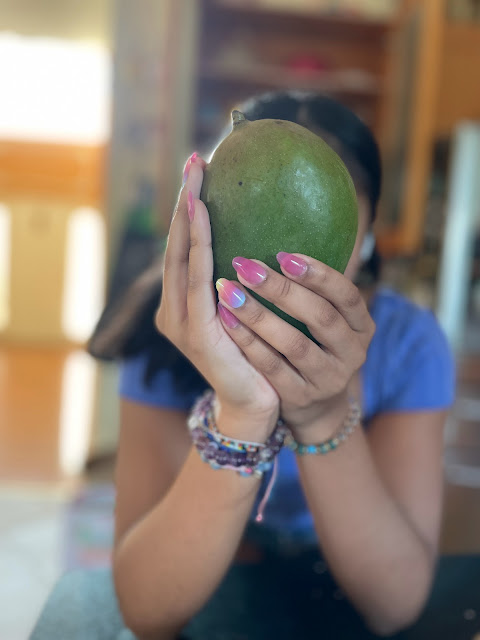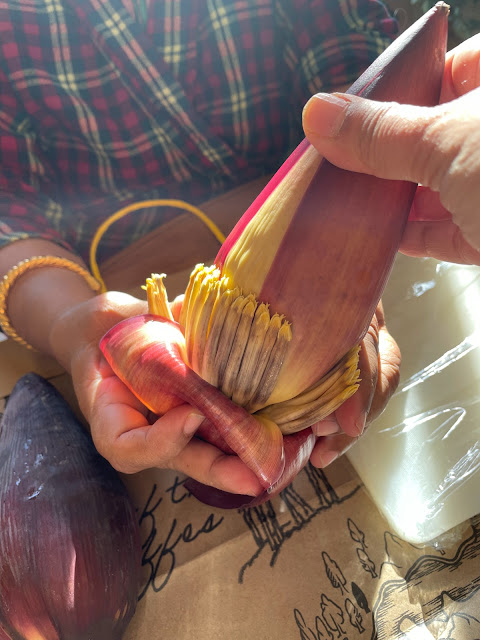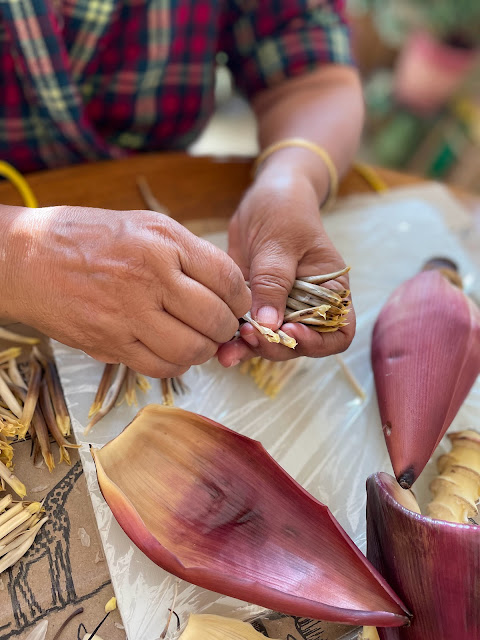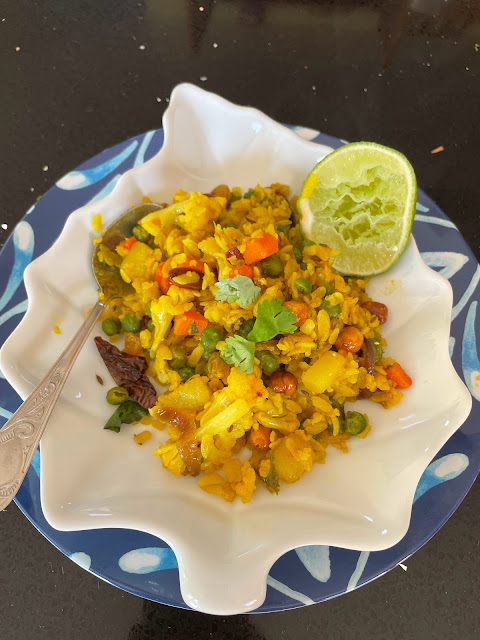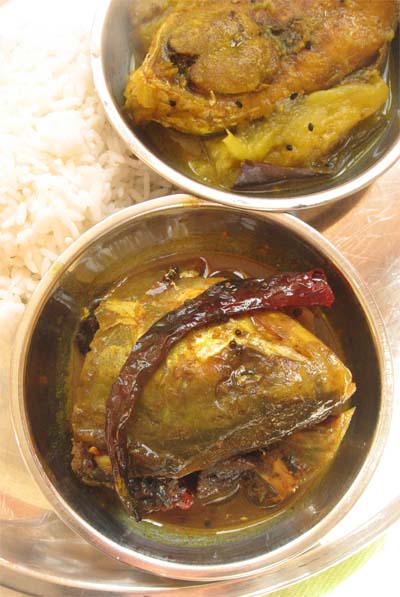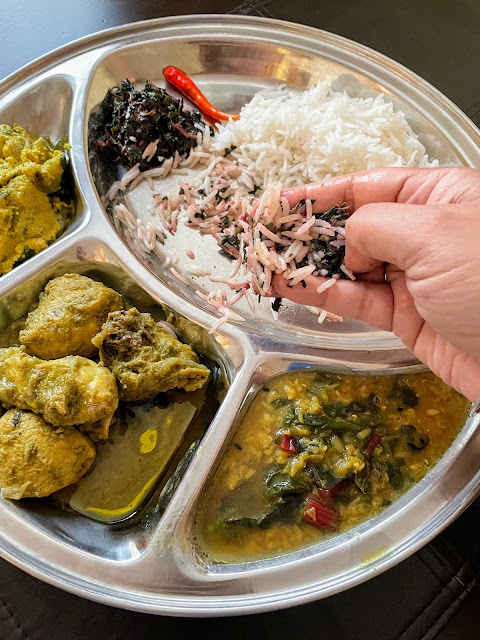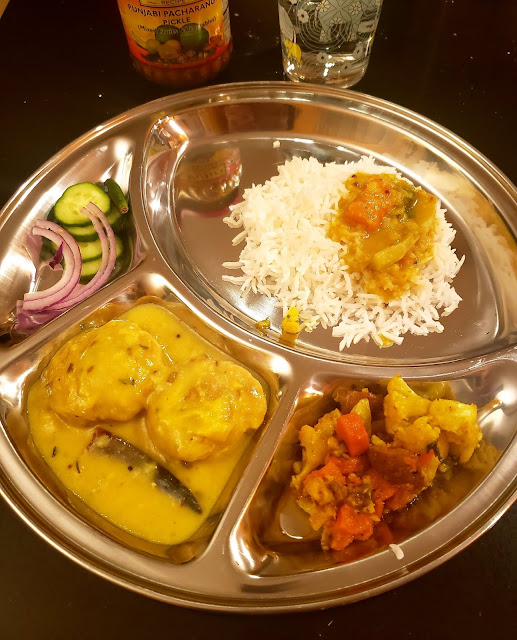 |
| Pakodi Kadhi |
We are on the 3rd week of school closures. It has now been 14 days since we are in quarantine though the official lockdown in our state started a bit later.
Cases in New York and NJ seems to be rising like crazy. Almost 0.4% of NY's population has tested positive while 0.2% of NJ's
I am just glad that we are safe home and I am absolutely clueless why people are complaining so much about staying indoors.
I am for one happy as I can sleep a little more in the morning, don't have the hour long commute each way each day, and now that the girls don't have any after school activity, my evenings are no longer rushed.
Instead of crazy Sundays, where I had to plan and cook ahead for the week, now I am cooking a dish almost every evening. I am also making rotis, albeit painstakingly, and not always great ones, but I am trying.
Today after a long time, I made this favorite dish of mine --
Pakodi Kadhi.
There was a time when I would pester my Mom to make this once a week at least. She would usually make it on a Friday, the day we ate vegetarian meals only. There were three favorite dishes earmarked for Fridays and she would always rotate the menu amongst these --
Chhanar Dalna,
Aloo Posto and
Pakodi Kadhi.
My Mother, having lived a lot of her life outside Bengal, had adapted a variety of non-Bengali Indian recipes in her kitchen and made them often. This was one of them. So at a time when most Bengalis, including the husband-man looked at me curiously when I mentioned that
Kadhi was my favorite dish, in our home we were eating Kadhi like we were born into it.
I still remember, many years ago, an impromptu guest (the typical Calcuttan) who had arrived with one of my cousins around our Friday lunch time. Our Friday lunch was usually simple and involved rice, dal, aloo posto and then either Chhanar Dalna or Kadhi. That particular day it was kadhi. We had almost finished our lunch when they had arrived but my Ma I remember insisted they join us at the table. The typical Bengali guy had plowed through, rice, dal, aloo posto, kadhi and sat at the table food drying up on his hands. When finally asked if he was done, he had blatantly said, he was waiting for the fish!! I still cannot forget the look on his face, when we told him, that there was no fish curry that day!! He was unable to fathom what the "kadhi" was and kept saying that in their house there was always a fish curry that followed dal.
Now that I think of it, it seems incredibly rude of him, but at that time we were just plain flummoxed by his ignorance.
Pakodi Kadhi or
dumplings made of besan/chickpea flour in a yogurt gravy is a very popular dish in Northern india and also Gujarat. There are little differences in the spices used in the two regions. I find the
Punjabi Pakodi kadhi is a tad bit more richer with use of onion in the pakodis as our Punjabi nanny would insist. The
Gujarati Pakodi kadhi is thinner and less spicy and I loved all the variety of Gujarati Kadhis that LS's Gujju babysitter would make for us. But that was 7 years ago. We haven't had anyone making anything for us since then!
This version of Kadhi is closer to the Gujarati version but I have stuck to the spices my Mother used which were minimal. The kadhi that LS's Gujarati nanny would make was more thinner and white in color, with no turmeric. However my Mother does uses turmeric and her kadhi is not runny so I have kept to that.
Pakodi Kadhi -- dumplings in a yogurt gravy
Make the Pakodi
Besan/Gram Flour -- 1 Cup
Green Chilies - 3 finely chopped
Salt - to taste
Mustard seeds -- 1/4 tsp
Baking soda - a pinch
Water -- 3/4th Cup
In a wide mouthed bowl, add the
Besan
Green Chili
Salt
Baking soda
With a fork mix the dry ingredients
Gradually add water, mixing the batter to a medium-thick consistency. Make sure the batter has no lumps.
Heat oil for frying in a Kadhai.
Once the oil is hot, take a tea spoonful of hot oil and add it to the batter and mix it in.
Now in hot oil, add
1 Tbsp of batter.
Depending on the size of your kadhai, you can add more. 1 Tbsp for each Pakodi.
Once the pakodi is cooked, flip with a slotted spoon and fry the other side. Do this a couple of times, turning and frying the dumpling in hot oil until the pakodi is crispy and golden brown.
When both sides are golden brown, take out with a slotted spoon and keep aside.
This amount of batter will make almost
12-15 pakodis.
Make the Kadhi
Yogurt - 1 Cup
Besan - 1/8th Cup
Red Chili Powder - 1/2 tsp
Yellow Turmeric Powder - 1/4 tsp
Water - 1 Cup
Spices for Tempering
Jeera/Whole Cumin seeds - 1/2 tsp
Methi/Fenugreek seeds - 1/2 tsp
Mustard seeds - 1/2 tsp
Fennel seeds - 1/2 tsp
Dry Red Chili - 2
Hing/Asafoetida - a pinch
Green Chili - 2 chopped
Kasoori Methi -- 1 tsp
Ghee - 1 tsp
Salt - to taste
Sugar - 1/2 tsp
Vegetable Oil -- 1 Tbsp
In the same bowl that you had used to make the batter, add
1 Cup sour Yogurt
1/8th Cup Besan
1 Cup Water
Red chili Powder
Turmeric powder
Beat well
Now in a saucier/kadhai warm
1 Tbsp Vegetable oil
When the oil is hot,
temper with the spices listed under Spices for Tempering.
Once the spices start popping,
take the saucier/kadhai off direct heat. Wait for 1 minute and then
slowly add the yogurt mix.
Put it back on low-medium heat mixing the gravy. Cook at medium heat for 2 minutes. Add some more water and mix well.
Now increase the heat to medium and bring the kadhi to a simmer. Add salt to taste. If the yogurt is very sour add little sugar. Simmer
until there is no raw smell of besan/gram flour. If needed add more water. Remember, the pakodis will absorb some of the liquid.
Now
add the pakodis and simmer for a couple more minutes. Remove from heat.
Add
1 tsp of Ghee and the Kasoori methi crushed between your palm. Let it sit for 10-15 minutes.
Serve hot with rice.
If you like what you are reading, get Bong Mom's Cookbook in your mailbox

